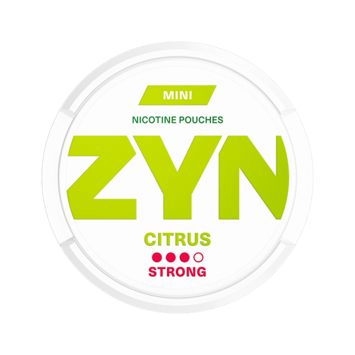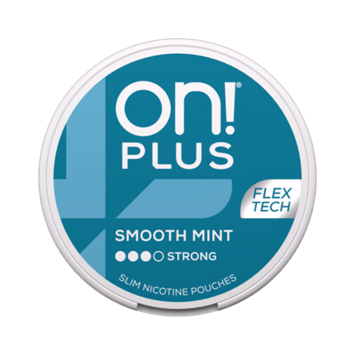how bad are nicotine pouches for your gums
Philip Plainstein

Nicotine pouches have gained significant popularity in the UK as a tobacco-free alternative to traditional smoking products. These small, discreet pouches are designed to deliver nicotine through the gums, leveraging the high concentration of blood vessels in the mouth for rapid absorption. While they are marketed as a safer option compared to cigarettes, their impact on oral health, particularly gum health, has raised concerns among users and health professionals alike.
The use of nicotine pouches can lead to several oral health issues, including gum irritation and recession. Prolonged use, especially when the pouch is frequently moved or left in the same spot, can cause abrasion and discomfort. Additionally, the constant flow of nicotine can affect blood vessel function, potentially leading to reduced blood flow to the gums, which may exacerbate conditions like gingivitis and periodontitis.
Despite these risks, it is important to note that nicotine pouches do not contain many of the harmful chemicals found in tobacco products. Studies have shown that they pose a low risk of carcinogenic effects and are less likely to cause diseases like cancer or severe gum disease compared to traditional tobacco products. However, the long-term effects of using these products are still being researched, and users are advised to maintain good oral hygiene practices to mitigate potential risks.
This article will delve into the current market trends, safety considerations, and regulatory aspects surrounding nicotine pouches. By examining recent research and real user experiences, we aim to provide a comprehensive understanding of how these products work and the potential risks they pose to oral health. Whether you are a current user or considering trying nicotine pouches, this guide will help you make informed decisions about your health.
Understanding Nicotine Pouches
Nicotine pouches are a modern, tobacco-free method of delivering nicotine, offering users a discreet alternative to traditional smoking products. These small, portable pouches are designed to fit between the lip and gum, allowing nicotine to be absorbed through the oral mucosa. This delivery system leverages the mouth’s rich supply of blood vessels for efficient absorption.
What They Are and How They Work
Nicotine pouches function by releasing nicotine as they come into contact with saliva. The nicotine binds to receptors in the mouth, triggering the release of dopamine, which contributes to their addictive nature. Unlike traditional tobacco products, they do not require combustion, making them a potentially safer option for users.
Key Ingredients and Composition
The primary components of nicotine pouches include water, microcrystalline cellulose, flavourings, and additives. Manufacturers often use artificial sweeteners to reduce the risk of dental caries. These pouches come in a variety of flavours, such as mint and coffee, appealing to a broad range of preferences. All additives are food-grade, ensuring safety for consumption.
| Aspect | Nicotine Pouches | Traditional Tobacco Products |
|---|---|---|
| Composition | Tobacco-free, water, microcrystalline cellulose, flavourings | Contains tobacco and numerous harmful chemicals |
| Delivery Method | Oral mucosa absorption | Inhalation through combustion |
| Additives | Artificial sweeteners to reduce dental caries risk | Varies, often includes harmful additives |
| Cancer Risk | Lower risk compared to traditional tobacco | Higher risk due to carcinogenic chemicals |
| Gum Health Impact | Potential for irritation and recession with prolonged use | Linked to severe gum disease and recession |
While nicotine pouches are considered a lower-risk option, their long-term effects on oral health are still under investigation. This section provides a foundational understanding, linking to further discussions on their oral and systemic health impacts.
The Rise of Nicotine Pouches in the UK
Nicotine pouches have become a popular choice in the UK since their introduction in 2019, particularly among smokers seeking harm reduction alternatives. Their discreet nature and tobacco-free composition have made them an attractive option for those looking to quit smoking.
Market Trends and User Demographics
The popularity of nicotine pouches has grown significantly, with usage among adults more than doubling from 0.14% in November 2020 to 0.32% in October 2021. This surge is driven by their appeal to smokers transitioning to safer alternatives, with many young adults and urban dwellers adopting their use.
UK clinicians and dental professionals are increasingly recognizing this trend, highlighting potential public health implications and the need for regulation as usage expands. Nicotine pouches are perceived as a safer alternative to traditional tobacco products, contributing to their growing acceptance.
| Aspect | Nicotine Pouches | Traditional Tobacco Products |
|---|---|---|
| Composition | Tobacco-free, water, microcrystalline cellulose, flavourings | Contains tobacco and numerous harmful chemicals |
| Delivery Method | Oral mucosa absorption | Inhalation through combustion |
| Additives | Artificial sweeteners to reduce dental caries risk | Varies, often includes harmful additives |
| Cancer Risk | Lower risk compared to traditional tobacco | Higher risk due to carcinogenic chemicals |
| Gum Health Impact | Potential for irritation and recession with prolonged use | Linked to severe gum disease and recession |
The data underscores the shift towards tobacco-free nicotine products, with nicotine pouches leading the way as a preferred smoking cessation tool in the UK.
how bad are nicotine pouches for your gums
Many users of nicotine pouches are concerned about their impact on gum health. While these products are marketed as a safer alternative to traditional tobacco, their effects on oral health, particularly gums, have sparked debate among dental professionals.
Prolonged use of nicotine pouches can lead to gum irritation and potential recession. This occurs when the pouch is left in contact with the same spot for extended periods, causing abrasion and discomfort. The constant flow of nicotine can also affect blood vessel function, reducing blood flow to the gums and potentially worsening conditions like gingivitis and periodontitis.
Research has shown that nicotine pouches may cause localized gingival recession and irritation. Dental professionals have raised concerns, comparing the effects to those seen with smokeless tobacco products like snus. While the evidence is still emerging, it’s clear that nicotine pouches can compromise gum health despite not being carcinogenic themselves.
It’s crucial to be vigilant for early symptoms of gum irritation, such as redness, swelling, or bleeding. Maintaining good oral hygiene is essential, including regular brushing and flossing. For more information on the safety of nicotine pouches, you can visit this resource.
This section serves as a foundation for understanding the oral health implications of nicotine pouches, which will be explored further in subsequent sections.
Exploring Oral Health Effects and Risks
Nicotine pouches have sparked concern regarding their impact on oral health, particularly gum tissue. While they are perceived as a safer alternative to smoking, their prolonged use may lead to specific oral health issues.
Gum Recession and Irritation
The prolonged use of nicotine pouches can cause gum recession and irritation. This occurs when the pouch is left in contact with the same spot for extended periods, leading to abrasion and discomfort. The constant flow of nicotine can affect blood vessel function, reducing blood flow to the gums and potentially worsening conditions like gingivitis and periodontitis. These effects draw parallels to the impacts seen with smokeless tobacco products like snus.
Potential for Plaque Accumulation and Caries
Nicotine pouches may also lead to plaque accumulation near the application site, increasing the risk of dental caries. While nicotine itself is not directly carcinogenic, its effects on oral tissues are still under evaluation. Regular dental check-ups are crucial for frequent users to monitor and address any early signs of oral health issues.
| Aspect | Nicotine Pouches | Traditional Tobacco Products |
|---|---|---|
| Gum Impact | Potential for irritation and minor recession | Linked to severe gum disease and recession |
| Plaque Risk | May lead to plaque accumulation near the site | High risk of plaque and tartar buildup |
| Dental Caries | Increased risk due to plaque accumulation | Higher risk due to multiple harmful chemicals |
| Oral Health Monitoring | Recommended regular dental check-ups | Essential for managing severe oral health issues |
While the evidence is still evolving, early signs suggest that users should adopt a cautious approach. Maintaining rigorous oral hygiene practices is essential to mitigate these risks. Both short-term and potential long-term changes in oral health should be considered with continued use.
Comparisons with Traditional Smokeless Tobacco
Nicotine pouches differ significantly from traditional smokeless tobacco products like snus. Unlike snus, which contains tobacco leaf, nicotine pouches are tobacco-free and rely on water-based fillers and artificial sweeteners. This difference in composition reduces the toxic compound profile, making nicotine pouches a lower-risk option.
Differences from Snus and Other Products
One key distinction is the absence of tobacco in nicotine pouches, which lowers their cancer risk compared to traditional smokeless tobacco. Additionally, nicotine pouches deliver nicotine through the mouth’s mucosal tissues, unlike snus, which is typically placed between the gum and cheek. This method reduces irritation and potential gum recession associated with prolonged use of snus.
Users of nicotine pouches often report a different experience compared to traditional smokeless tobacco. Nicotine pouches are perceived as more discreet and less intrusive, which may contribute to their growing popularity. However, while they offer a safer alternative, cautious use is still advised due to potential localized effects on gum health.
Nicotine Pouches in Smoking Cessation
Nicotine pouches have emerged as a novel tool for smokers aiming to quit. Their discreet nature and ease of use make them an attractive option for those seeking to reduce harm.
User Experience and Nicotine Delivery
Nicotine pouches deliver nicotine through the oral mucosa, offering a different sensory experience compared to traditional NRTs. They release nicotine steadily, though slower than cigarettes, which can help manage cravings without the abrupt spike.
Advantages and Limitations Compared to Other NRTs
These pouches are simpler and more discreet than gum or lozenges. However, they may not suit those needing rapid relief. Surveys show high satisfaction, with users praising their taste and ease of use.
| Aspect | Nicotine Pouches | Nicotine Gum | Nicotine Lozenges |
|---|---|---|---|
| Delivery Method | Oral mucosa absorption | Chewing action | Dissolves in mouth |
| User Experience | Discreet, varied flavours | Chewing can be tedious | Convenient but less flavour variety |
| Satisfaction Rates | High user satisfaction reported | Lower satisfaction compared to pouches | Moderate satisfaction levels |
| Nicotine Release | Steady release | Intermittent release | Quick dissolve |
Nicotine pouches offer a promising option for smoking cessation, balancing ease of use with effective nicotine delivery. While they have limitations, their role in harm reduction is significant.
Legislation and the UK Regulatory Framework
In the UK, nicotine pouches fall under the General Product Safety Regulations (GPSR), which ensure products are safe for consumer use. Unlike traditional tobacco products, they are not regulated under the Tobacco and Related Product Regulations because they don’t contain tobacco.
General Product Safety Regulations (GPSR)
The GPSR requires manufacturers to ensure their products are safe, providing clear instructions and warnings. Nicotine pouches must meet these standards, though they lack specific regulations on nicotine strength and advertising.
Concerns Raised by ASH and Other Stakeholders
Action on Smoking and Health (ASH) has expressed concerns about the accessibility of these products to minors and the lack of advertising restrictions. They also highlight the absence of limits on nicotine strength, which could pose public health risks.
| Aspect | Nicotine Pouches | Traditional Tobacco Products |
|---|---|---|
| Regulation | General Product Safety Regulations (GPSR) | Tobacco and Related Product Regulations |
| Nicotine Limits | No specific limits | Strict limits and controls |
| Advertising | No restrictions | Strict advertising bans |
| Age Restrictions | Proposed age of sale at 18 | Enforced age of sale at 18 |
| Health Risks | Lower risk, but concerns remain | Higher risk of disease |
Regulators are considering stricter rules for nicotine pouches, similar to those for e-cigarettes. As their popularity grows, updated guidance is essential to balance public health concerns with consumer demand. Staying informed about regulatory changes will help users and stakeholders navigate this evolving landscape.
Safety Considerations and Long-Term Outlook
When considering the use of nicotine pouches, it’s important to weigh both the immediate and potential long-term effects on your health. While these products are marketed as a safer alternative to smoking, understanding their safety profile is crucial for informed decision-making.
Short-Term Side Effects to Monitor
In the short term, users may experience mild gum irritation or discomfort. These effects often depend on how frequently and how long the pouches are used. For instance, leaving a pouch in the same spot for extended periods can cause abrasion. It’s also worth noting that nicotine can affect blood flow to the gums, potentially worsening conditions like gingivitis.
Long-Term Usage and Potential Issues
The long-term implications of using nicotine pouches are less clear. Research is ongoing to understand whether prolonged use might lead to chronic oral health issues. While current evidence suggests that nicotine pouches pose a lower risk compared to smoking, caution is still advised, especially with daily use.
Key Considerations:
- Monitor for symptoms like gum irritation, redness, or swelling, and seek professional dental advice if these persist.
- Balance the use of nicotine pouches as a harm reduction tool with regular oral health check-ups to mitigate risks.
- Stay informed about future research directions and the need for further data on long-term effects.
“Nicotine pouches may offer a safer alternative to traditional tobacco products, but their long-term effects on oral health remain uncertain.” – A 2023 study on nicotine pouches.
In summary, while nicotine pouches present a promising option for harm reduction, their safety profile, especially in the long term, requires careful consideration. Maintaining good oral hygiene and staying informed about emerging research are essential for users.
Final Thoughts on Nicotine Pouches and Your Oral Health
In conclusion, nicotine pouches offer a lower-risk alternative to traditional tobacco products, particularly for those seeking to reduce harm. While they present a safer option with fewer toxic compounds, their impact on oral health, especially gum health, warrants careful consideration. Users should remain vigilant for signs of gum irritation and maintain rigorous oral hygiene practices to mitigate potential risks.
The evidence highlights that nicotine pouches can cause localized gum recession and irritation, similar to smokeless tobacco products. However, they contain artificial sweeteners, reducing the risk of dental caries. Despite their benefits in smoking cessation, the long-term effects on oral health are still under investigation.
It is crucial to balance the use of nicotine pouches with regular dental check-ups. For more detailed insights into their oral health implications, visit our dedicated resource. Remember, while these products are less harmful than traditional tobacco, they are not without risks. Stay informed and proactive to ensure your oral health remains a priority.









